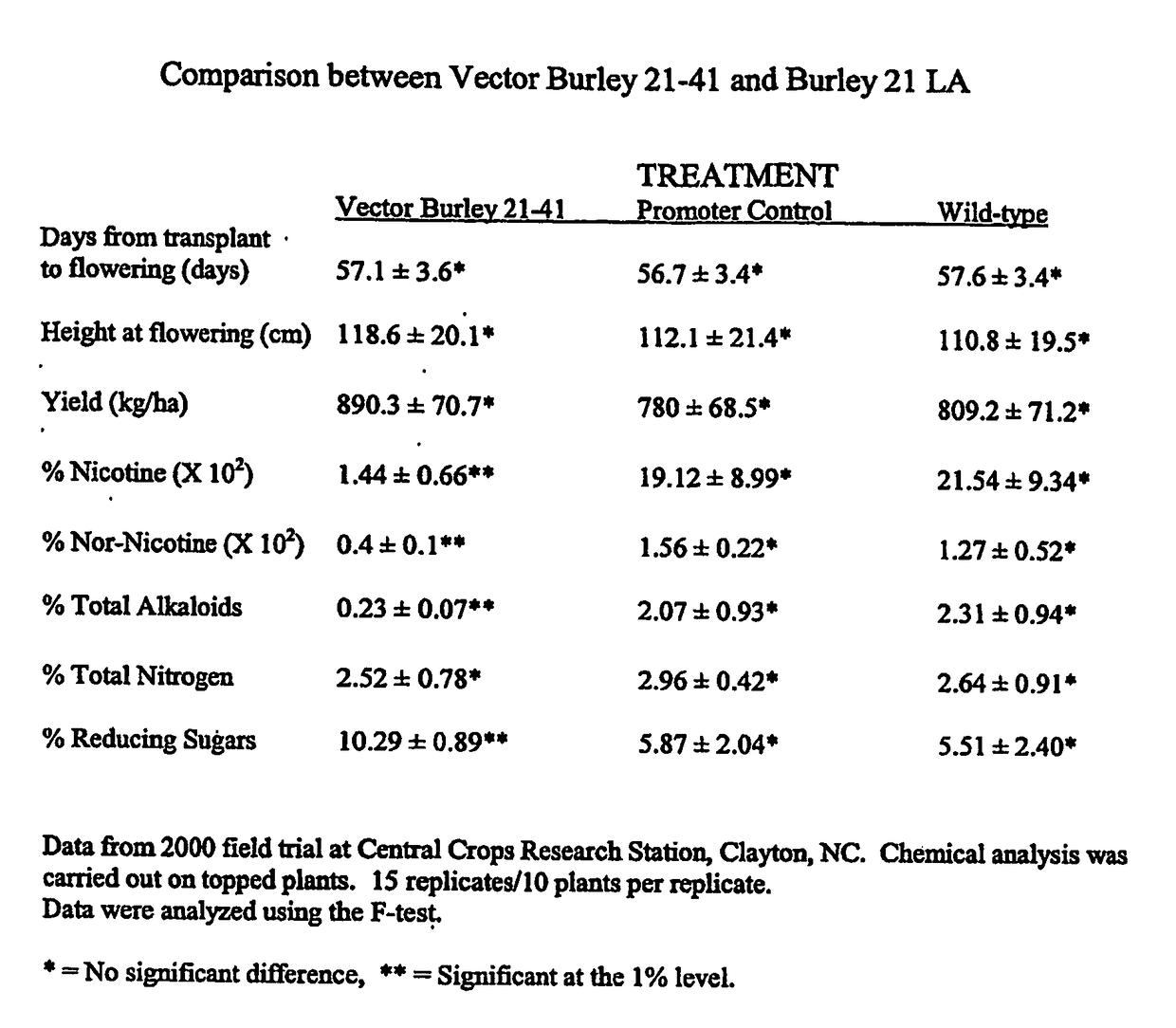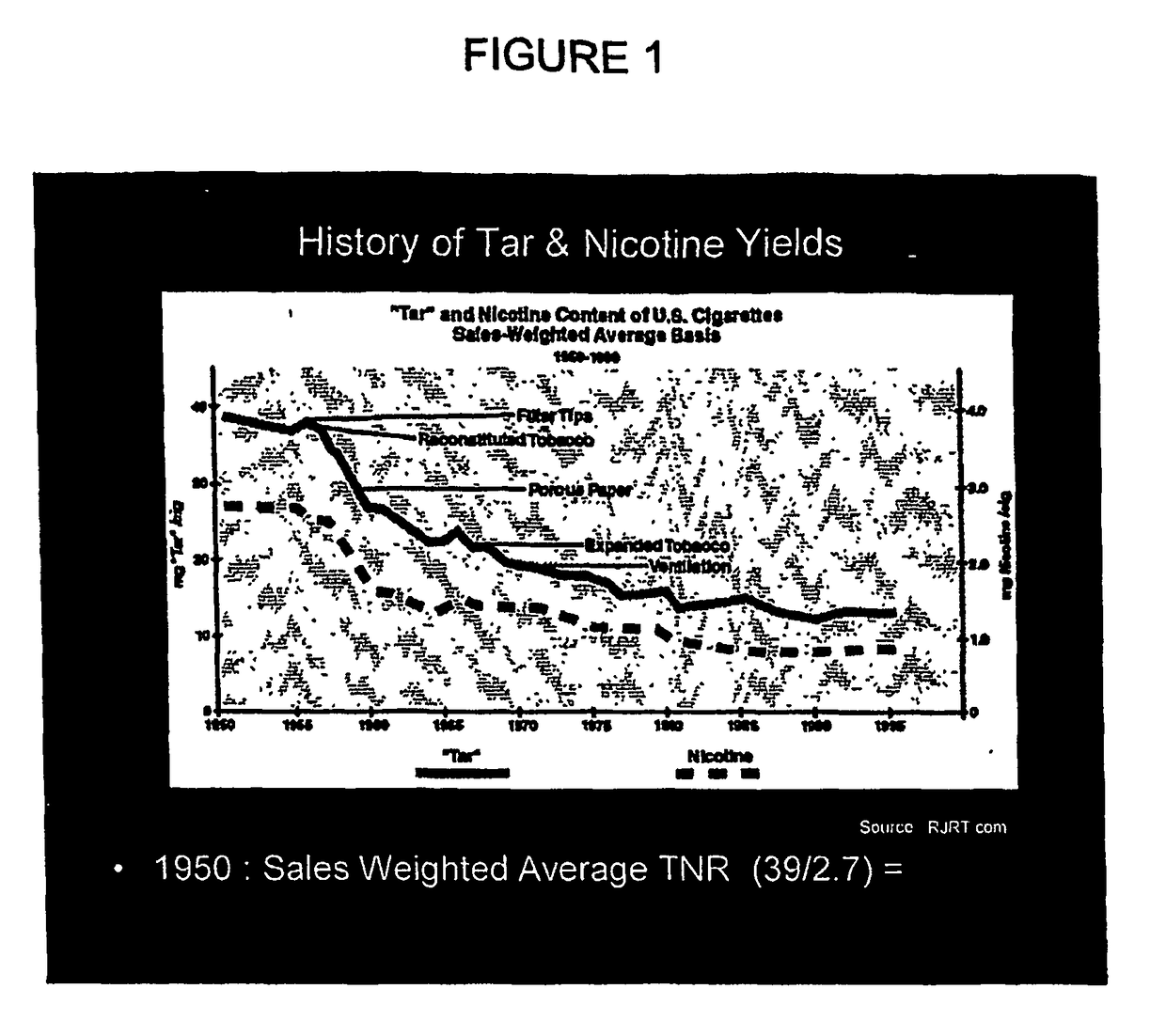Reduced-exposure tobacco products
a tobacco product and reducing technology, applied in the field of reducing tobacco products, can solve the problems of unrealistic solutions, tobacco smoking could cause up to one billion premature deaths worldwide, and prohibitionist anti-tobacco policies from the anti-tobacco lobby have been unsuccessful, so as to reduce tobacco use and reduce tobacco's overall toll on society
- Summary
- Abstract
- Description
- Claims
- Application Information
AI Technical Summary
Benefits of technology
Problems solved by technology
Method used
Image
Examples
Embodiment Construction
[0124]Some aspects of the present invention reduce the tar-to-nicotine yield ratio (TNR) of cigarettes by restricting tar delivery to the smoker while providing adequate amounts of nicotine to maintain smoker satisfaction. The result is a cigarette that effectively offers smokers a satisfactory amount of nicotine with preferably less harmful tar and gases. Failure of current light and ultra-light commercial cigarettes to efficiently deliver a satisfactory level of nicotine to smokers, results in aggressive smoking behavior called compensation, which may cause more harm to the smoker. This is because such cigarettes reduce tar and nicotine yields concurrently and at about the same rate.
[0125]The present invention, in conjunction with different levels of filtration and / or smoke dilution, provides for increasing the nicotine content of the cigarette's filler, either genetically within the tobacco plant, or by adding nicotine to the filler, thereby allowing the cigarette's nicotine deli...
PUM
| Property | Measurement | Unit |
|---|---|---|
| volumes | aaaaa | aaaaa |
| time | aaaaa | aaaaa |
| time | aaaaa | aaaaa |
Abstract
Description
Claims
Application Information
 Login to View More
Login to View More - R&D
- Intellectual Property
- Life Sciences
- Materials
- Tech Scout
- Unparalleled Data Quality
- Higher Quality Content
- 60% Fewer Hallucinations
Browse by: Latest US Patents, China's latest patents, Technical Efficacy Thesaurus, Application Domain, Technology Topic, Popular Technical Reports.
© 2025 PatSnap. All rights reserved.Legal|Privacy policy|Modern Slavery Act Transparency Statement|Sitemap|About US| Contact US: help@patsnap.com



